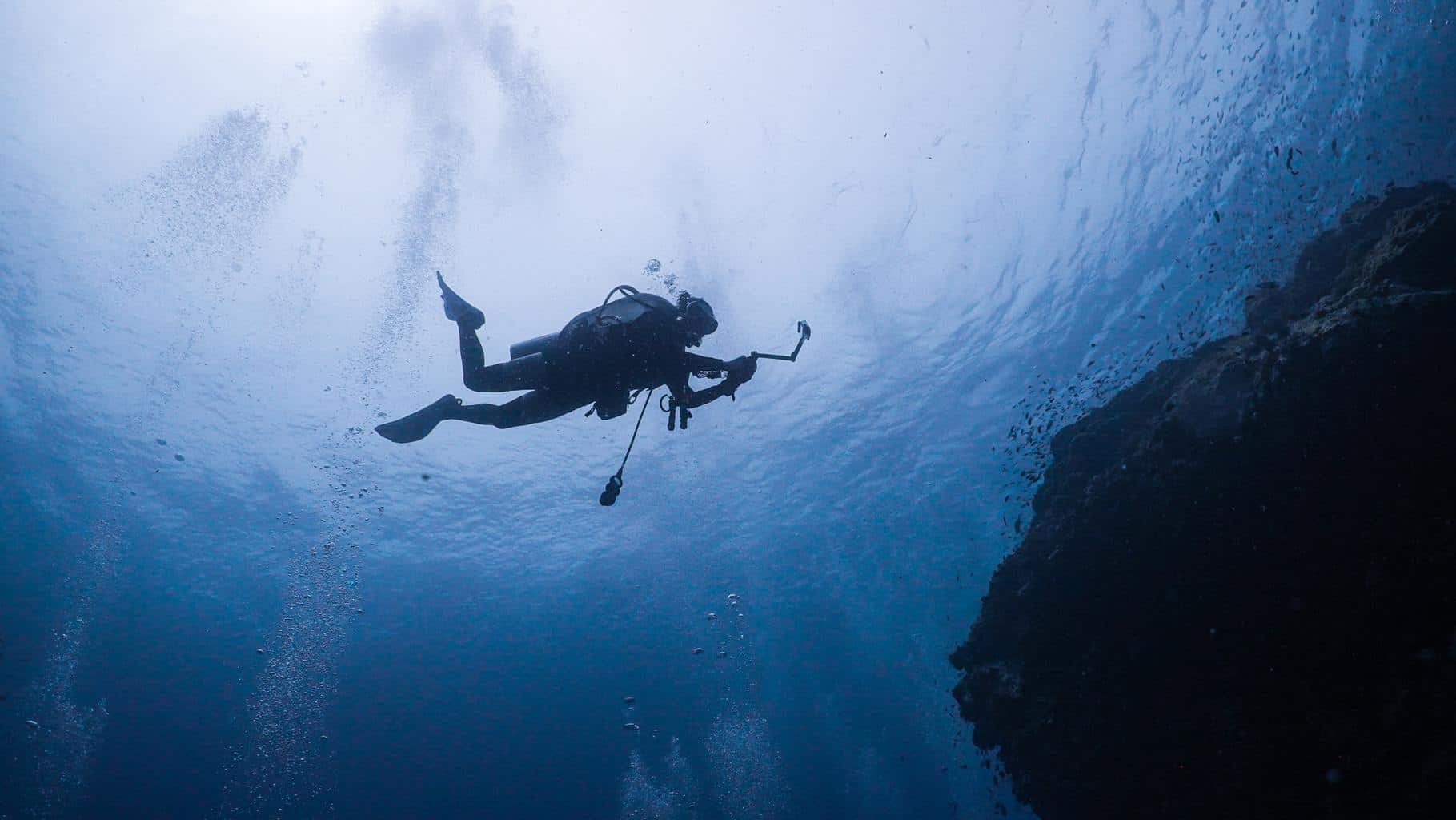If you are interested in scuba diving, even if you’re not certified, you might have heard the term safety stop before.
But what is it, and why do divers need to care about it?
We’re going to take a look at safety stops and will see that it’s a common practice nowadays on all scuba dives to make a stop at 15ft / 5m depth for three minutes before heading to the surface to add some extra caution.
We will see that there are some circumstances where safety stops are a must and look at why it’s essential to be aware of the rules to remain safe.
- What Are Safety Stops in Scuba Diving?
- What Is the Difference Between a Safety Stop and Decompression Stop?
- Do I Have to Make a Safety Stop, or Are They Optional?
- How Deep Can You Dive Without a Safety Stop?
- When Should You Make a Safety Stop?
- How Do I Know How Long My Safety Stop Should Be?
- What Should I Do if I Missed a Safety Stop?
- What if I Have to Skip the Safety Stop Due to an Emergency?
- Conclusion
- You Might Also Like…
Disclosure: this post contains affiliate links (clearly marked with ), which means we may earn a commission if you buy something through them, at no additional cost to you.
What Are Safety Stops in Scuba Diving?
A safety stop in recreational scuba diving is a part of the ascent procedure at the end of the dive that is carried out as a precaution to build in extra margins of safety.
While under general circumstances, they’re not considered mandatory, they are accepted in the broad scuba community as good practice, and you’ll see most divers carry them out as standard.
Indeed in many dive resorts, they’re regarded as a part of normal diving safety rules, and you’ll be expected to make one on every dive irrespective.
During a dive, we absorb nitrogen, the inert gas that’s in the air, into our bodies.
The absorption of this gas doesn’t cause any problems to us, but we need to be careful about releasing it safely when we end the dive.
If the dissolved nitrogen gas in our tissues comes out of solution too quickly, it can form bubbles in our tissues or bloodstream.
This results in probably the most famous scuba diving injury, Decompression Sickness (DCS), also known as “The Bends,” and can be extremely dangerous and even deadly.
Needless to say, DCS is something we want to avoid, and we can do so by diving conservatively, adhering to maximum ascent rates and decompression limits, and avoiding factors that make you more likely to be susceptible (for example, dehydration, obesity, diving when overtired, and smoking).
Since the 1980s, when they were first introduced into recreational scuba, safety stops have become an accepted part of normal diving to further increase safety and caution and are taught as standard on entry-level scuba certification courses.
The stop is designed to pause the ascent to allow some of the absorbed nitrogen to release in a slow, controlled way and ease the body’s safe return to the surface.
The standard definition of a safety stop is for the diver to pause ascending at 15ft / 5m, maintain that depth, and wait for 3 minutes before swimming slowly to the surface and ending the dive.
What Is the Difference Between a Safety Stop and Decompression Stop?
A decompression stop is a stop that is required when a diver has exceeded the recreational no-decompression limit.
In these circumstances, a decompression stop must be made if the diver is to remain reasonably safe from the risk of decompression sickness.
The length of the decompression stop and the depth it’s made at will depend on the depth that the diver has been to and how much they’ve exceeded the no-decompression limit by.
Dive computers will tell the diver exactly when to stop and how long for.
So while we can say that generally, a safety stop is building in extra safety for cautious and conscientious divers, a decompression stop is mandatory, and if it’s not carried out, then the diver is putting themselves at an extremely high risk of a decompression injury.
Do I Have to Make a Safety Stop, or Are They Optional?
Scuba diving training agencies recommend making a safety stop on all dives to build extra caution into the dive.
While safety stops shouldn’t be seen as a way of making up for other safety miss-demeanors, they are an excellent way to add additional caution.
Though not necessarily mandatory on most dives, safety stops are considered a standard good practice to carry out on all dives, and indeed some dive operators might insist you do.
There are some circumstances, though, where you do have to make a safety stop.
Where they are mandatory depends on the dive table or computer being used to plan and carry out the dive.
For example, the PADI Recreational Dive Planner table recommends making a safety stop on all dives but says that they are “required any time a diver comes up to or within 3 pressure groups of a no-decompression limit and for any dive to a depth of 100ft / 30m or deeper.”
The no-decompression limit is the maximum amount of time that the table states a diver can safely spend at a given depth before making their direct ascent to the safety stop and then ending the dive.
Pressure groups are a grouping method to show how close to the maximum limit the diver is for different dive times.
So with a dive table, you need to make a safety stop when making deeper or longer dives.
Dive computer manufacturers, for example, the popular Suunto range, work on similar rules, although often with a little more detail.
Suunto states that safety stops are recommended for “every dive over 30ft / 10 meters” but that they are not mandatory and that the computer will not apply a penalty to the diver for subsequent dives if the safety stop isn’t made.
However, the Suunto computer will make the stop mandatory if the diver has broken other safety practices during the dive, in particular if they have made an ascent faster than advised.
If nothing else, safety stops are an excellent way to slow a divers ascent and pause before reaching the surface.
As well as adding in some caution which is always a good idea, they’re a great way to tune buoyancy skills in shallower water and in tropical waters often still give opportunities for admiring shallower reef life.
If all else fails, you can always take photos of your buddy while you both wait for the countdown to finish.
How Deep Can You Dive Without a Safety Stop?
So long as no other safety rules, for example, exceeding safe ascent rates, have been broken, safety stops remain recommended on all dives but become mandatory in two circumstances.
In the first instance, a safety stop should always be carried out on dives deeper than 100ft / 30m.
However, the second circumstance depends on the length of the dive and how close the diver is to the no-decompression time limit, and so can theoretically be required on dives as shallow as 30ft / 10m if there for long enough.
For example, taking a typical recreational dive at a depth of 60ft / 18m, if the length of the dive at that depth meets or exceeds 51 minutes, the Recreational Dive Planner requires a safety stop.
So the need or not for a mandatory safety stop is not just determined by depth, but also the dive time.
When Should You Make a Safety Stop?
While a safety stop is recommended on all dives, it isn’t a mandatory part of recreational scuba diving except under certain circumstances, depending on the method used to plan and run the dive.
This might be a dive table or dive computer, and it’s important to follow all the rules of whichever is being used correctly.
Most dive tables recommend making safety stops on all dives but say they are required on dives deeper than 100ft / 30m.
Tables will also require safety stops when a diver is getting close to the recreational no-decompression limits.
Using a dive computer means that unlike with a dive table, the computer can monitor all aspects of the dive and so can make its recommendations more specific to the actual diver themselves and the dive they’ve done.
Most dive computers say that safety stops are recommended for dives deeper than 30ft / 10m but will only make the stop mandatory if the diver has exceeded a safe ascent rate speed (commonly anything over 30ft / 10m per minute).
It is absolutely normal for divers to make a safety stop on every dive they make unless they’re really shallow or short.
You’ll find a safety stop might be a local requirement when visiting a dive resort, and usually, it’s an opportunity to enjoy wildlife in the shallows at the end of the dive.
How Do I Know How Long My Safety Stop Should Be?
A standard safety stop is made for at least 3 minutes while the diver is holding a depth of 15ft / 5m.
Before dive computers became widespread, the normal way to monitor the safety stop would be by using a depth gauge and a watch to check depth and time.
Dive computers have made this task much easier for divers.
When the diver reaches an appropriate depth (usually between 20-15ft / 6-5m depending on the model), the dive computer will automatically start the safety stop and will count down the remaining time and show the diver when it’s appropriate to start ascending to the surface.
Carrying out a safety stop with a dive computer is very easy as the remaining stop time and your depth can readily be checked.
What Should I Do if I Missed a Safety Stop?
The exact rules for what to do in the event of a missed safety stop depend on the dive table or computer that you’re using for your dive.
In general, if no other safety rules (such as ascent rate) have been broken, then the good practice would be to wait for a minimum one-hour surface interval before your next dive and to make any subsequent dives that day shallower than 100ft / 30m.
Remember, if in any doubt at all, it’s always best to leave longer between dives or even skip and dive another day.
What if I Have to Skip the Safety Stop Due to an Emergency?
As safety stops are considered a precaution to build in extra safety to the dive, the emergency overrules the need to carry out the stop.
For example, in the event of rescuing another diver or in a low or out of air situation, then a safety stop can very reasonably be discarded.
However, even in an emergency, maximum ascent rates must still be adhered to (for example, with the PADI Recreational Diver Planner a maximum of 60ft / 18m per minute or with a dive computer usually 30ft / 10m per minute), unless there is no other choice.
Conclusion
Safety stops are a simple way to build a little bit of extra safety and caution into your dive with minimal effort.
Stopping at 15ft / 5m depth for three minutes before heading to the surface on all your dives as well as the ones where your computer or dive table says you must is an easy method to slow your ascent down and dive cautiously, which is always a good idea!
You Might Also Like…
-

How Do Scuba Divers Drink Water? 5 Possible Ways (+7 Tips)
-

How Long Can Scuba Divers Stay Underwater? (+9 Limiting Factors)
-

Are Scuba Divers Athletes? All the Facts (+New Competitive Forms)
-

Are Sharks Scared of Scuba Divers? (What Every Diver Must Know)
-

Who Should Not Scuba Dive? 17 Reasons (Every Diver Should Know)
-
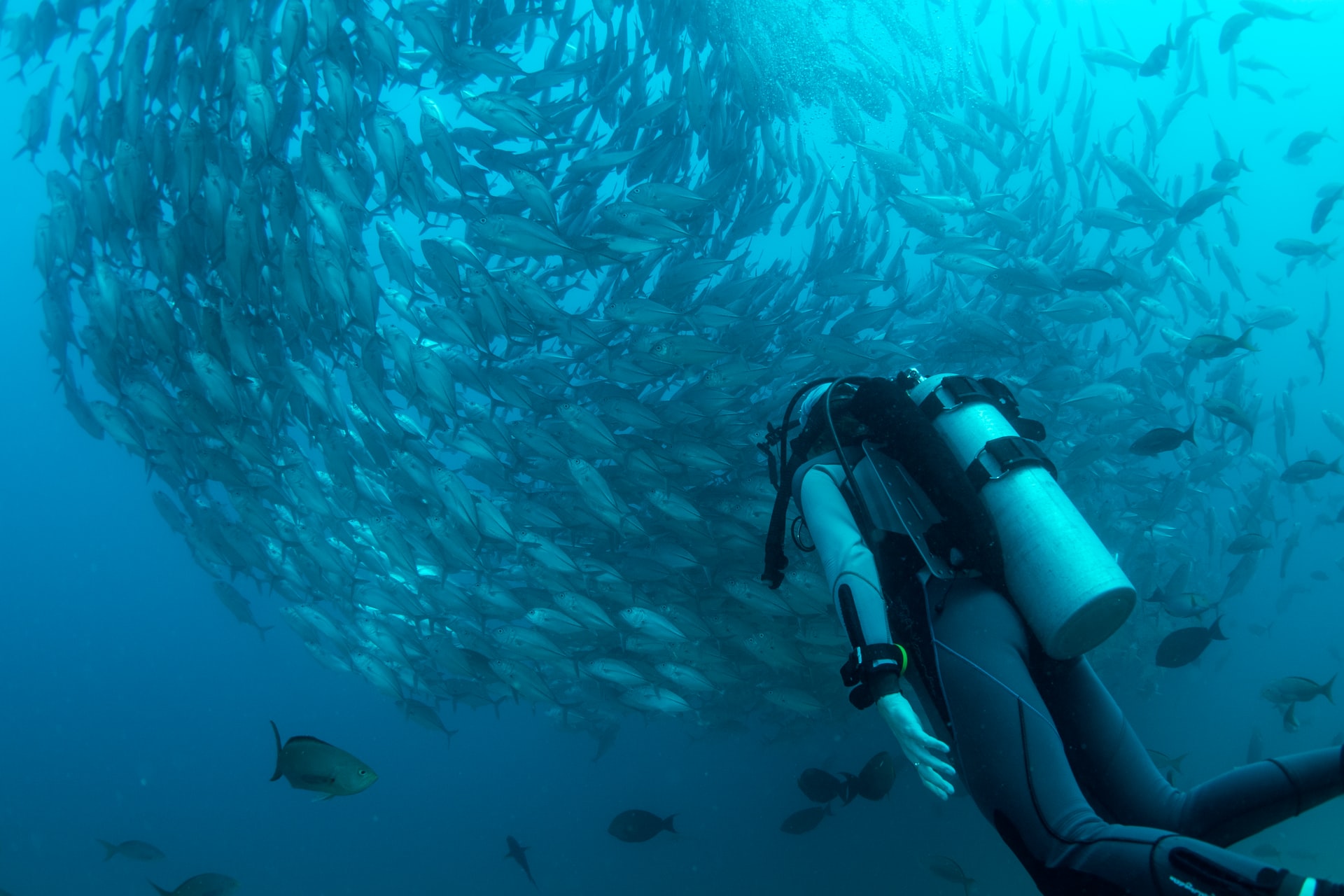
Should I Be Scared of Scuba Diving? 8 Common Fears (Debunked)
-

Why Do Scuba Divers Use More Air at Depth? (+4 Practical Tips)
-
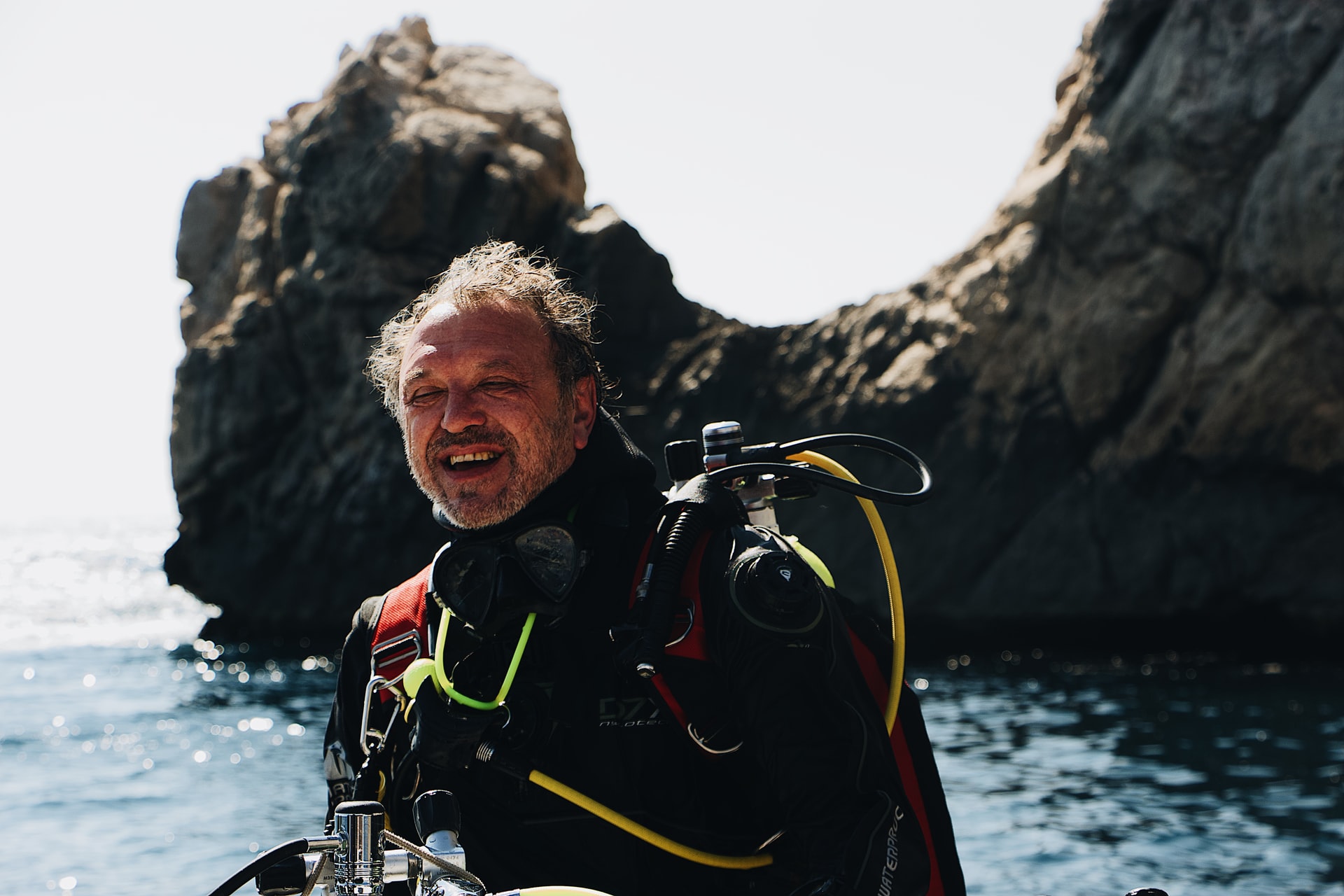
At What Age Should You Stop Scuba Diving? (+9 Tips for Older Divers)
-
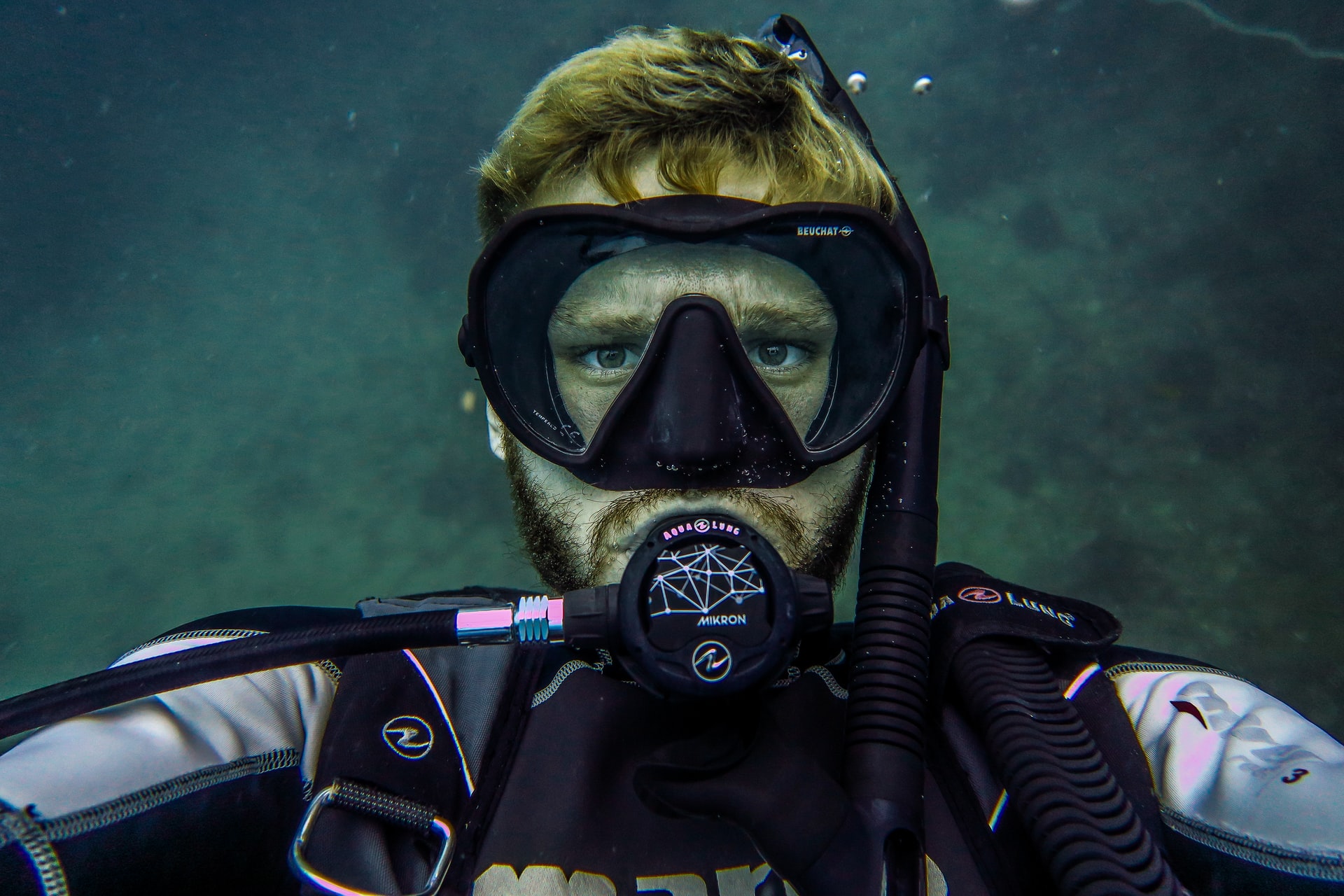
Should I Shave Before Scuba Diving? Crucial Facts (+9 Helpful Tips)
-

Why Do Scuba Divers Use Helium? (+Its Pros & Cons)
-
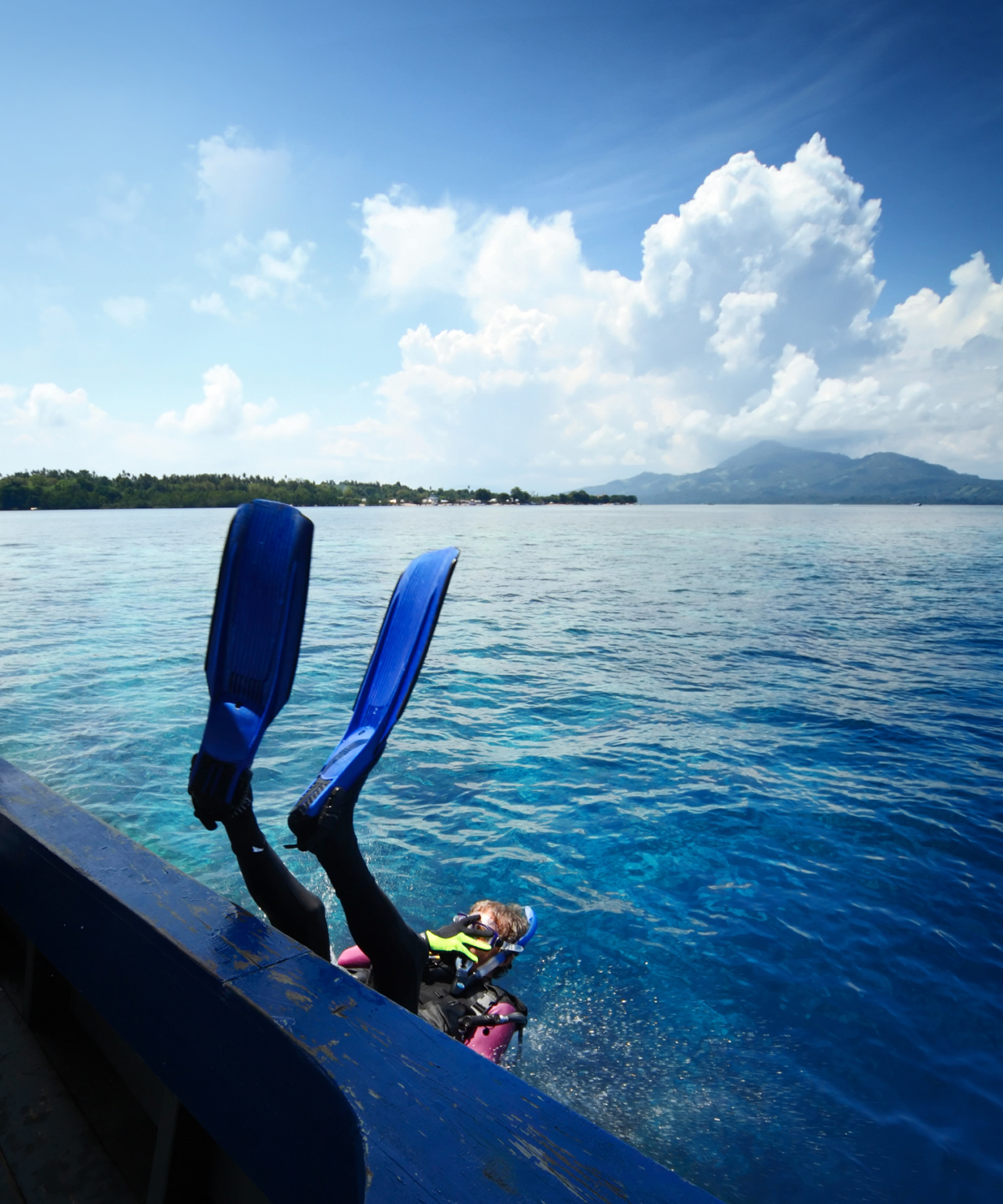
Why Do Scuba Divers Go in Backwards? (+3 Alternative Entries)
-

How Do Scuba Divers Sink and Float? (+Tips to Get It Right)

